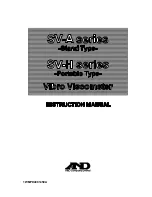
Design and Operation
19
3.3 Accuracy
The data sheet values for the
CMC 156
are not typical values but guaranteed
values over one year from the time of factory calibration at 23 °C
±
5 %
(73 °F ± 10 °F).
Some factors had to be taken into account during development in order to
achieve the desired accuracy. For example, let's look at the signal path from
the signal generator to the output jack:
Signal
generation
DSP
D/A converter
Rec. filter
Amplifier
Output
signal
Figure 4
Output signal path
When the signal is generated in the DSP, an adequate bit width is ensured.
Naturally, the drift and the temperature coefficients are unimportant.
Therefore, the amplitude and offset correction is preferably carried out in the
DSP. There are no conventional trim pots (with poor temperature coefficients)
at all.
The amplification and offset errors of the D/A converters are corrected by the
DSP. For component selection the linearity as well as temperature and long-
term drift were taken into account above all.
In the case of the voltage amplifier it is important that there is a gain-fixing
negative feedback across the entire amplifier, which is built via precision
resistors with corresponding temperature coefficient.
To ensure precision production appropriate measuring devices are necessary.
The measuring devices used by OMICRON are calibrated at regular intervals.
This ensures traceability to national and international standards.
Summary of Contents for CMC 156
Page 1: ...27 CMC 156 Reference Manual ...
Page 8: ...Test Set CMC 156 8 ...
Page 46: ...Test Set CMC 156 46 ...
Page 56: ...Test Set CMC 156 56 ...
Page 68: ...Test Set CMC 156 68 ...
Page 70: ...Test Set CMC 156 70 ...















































